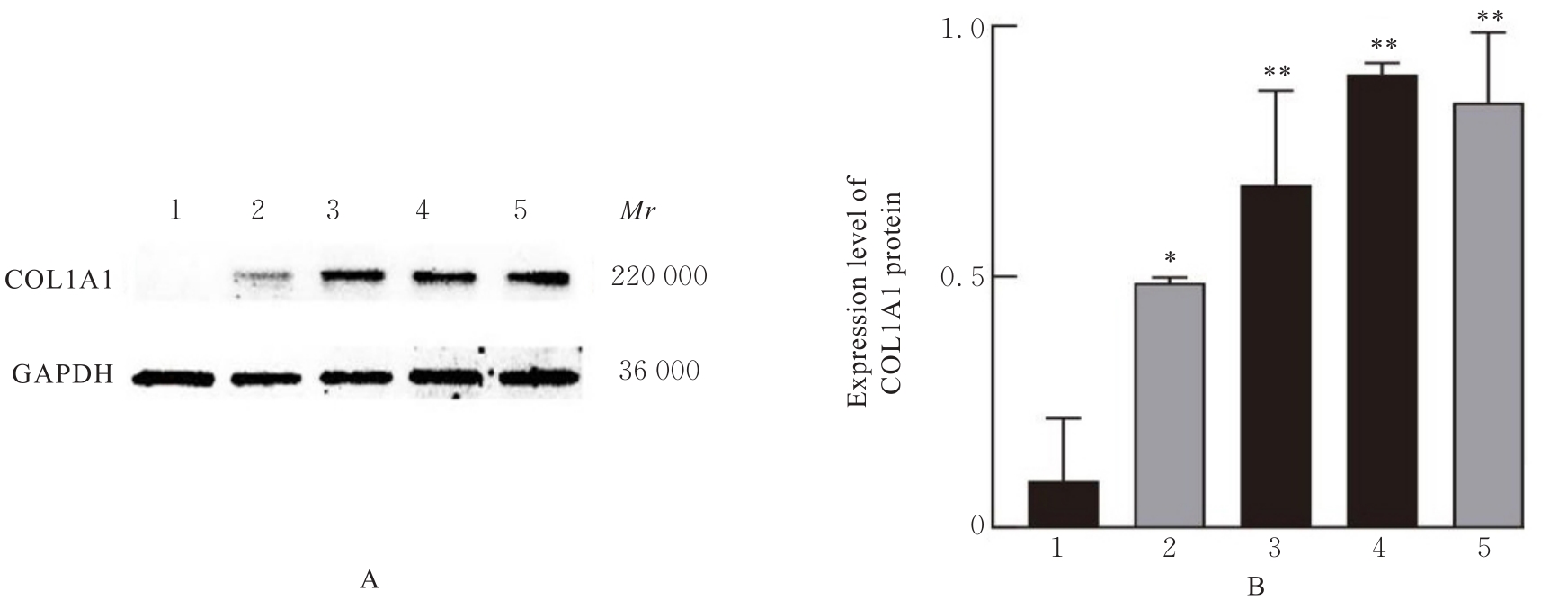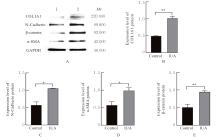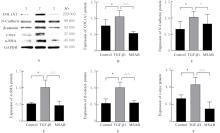| 1 |
ESFANDYARI S, CHUGH R M, PARK H S, et al. Mesenchymal stem cells as a bio organ for treatment of female infertility[J]. Cells, 2020, 9(10): 2253.
|
| 2 |
LEE W L, LIU C H, CHENG M, et al. Focus on the primary prevention of intrauterine adhesions: current concept and vision[J]. Int J Mol Sci, 2021, 22(10): 5175.
|
| 3 |
HU H H, CHEN D Q, WANG Y N, et al. New insights into TGF-β/Smad signaling in tissue fibrosis[J]. Chem Biol Interact, 2018, 292: 76-83.
|
| 4 |
LODYGA M, HINZ B. TGF-β1 - A truly transforming growth factor in fibrosis and immunity[J]. Semin Cell Dev Biol, 2020, 101: 123-139.
|
| 5 |
GYÖRFI A H, MATEI A E, DISTLER J H W. Targeting TGF-β signaling for the treatment of fibrosis[J]. Matrix Biol, 2018, 68/69: 8-27.
|
| 6 |
PAKSHIR P, NOSKOVICOVA N, LODYGA M, et al. The myofibroblast at a glance[J]. J Cell Sci, 2020, 133(13): jcs227900.
|
| 7 |
ZHANG Q, WANG L, WANG S Q, et al. Signaling pathways and targeted therapy for myocardial infarction[J]. Signal Transduct Target Ther, 2022, 7(1): 78.
|
| 8 |
SHREE HARINI K, EZHILARASAN D. Wnt/beta-catenin signaling and its modulators in nonalcoholic fatty liver diseases[J]. Hepatobiliary Pancreat Dis Int, 2023, 22(4): 333-345.
|
| 9 |
HADPECH S, THONGBOONKERD V. Epithelial-mesenchymal plasticity in kidney fibrosis[J]. Genesis, 2023: e23529.
|
| 10 |
XIONG Z H, MA Y R, HE J, et al. Apoptotic bodies of bone marrow mesenchymal stem cells inhibit endometrial stromal cell fibrosis by mediating the Wnt/β-catenin signaling pathway[J]. Heliyon, 2023, 9(11): e20716.
|
| 11 |
HWANG S Y, DENG X M, BYUN S, et al. Direct targeting of β-catenin by a small molecule stimulates proteasomal degradation and suppresses oncogenic Wnt/β-catenin signaling[J]. Cell Rep, 2016, 16(1): 28-36.
|
| 12 |
SURGERY A E G. AAGL practice report: practice guidelines on intrauterine adhesions developed in collaboration with the European Society of Gynaecological Endoscopy (ESGE)[J]. Gynecol Surg, 2017, 14(1): 6.
|
| 13 |
MAGOS A. Hysteroscopic treatment of Asherman’s syndrome[J]. Reprod Biomed Online, 2002, 4(): 46-51.
|
| 14 |
BATLLE E, MASSAGUÉ J. Transforming growth factor-β signaling in immunity and cancer[J]. Immunity, 2019, 50(4): 924-940.
|
| 15 |
LICHTMAN M K, OTERO-VINAS M, FALANGA V. Transforming growth factor beta (TGF-β) isoforms in wound healing and fibrosis[J]. Wound Repair Regen, 2016, 24(2): 215-222.
|
| 16 |
CHEN W J. TGF-β regulation of T cells[J]. Annu Rev Immunol, 2023, 41: 483-512.
|
| 17 |
KIM K K, SHEPPARD D, CHAPMAN H A. TGF-β1 signaling and tissue fibrosis[J]. Cold Spring Harb Perspect Biol, 2018, 10(4): a022293.
|
| 18 |
BUDI E H, SCHAUB J R, DECARIS M, et al. TGF-β as a driver of fibrosis: physiological roles and therapeutic opportunities[J]. J Pathol, 2021, 254(4): 358-373.
|
| 19 |
GUO L P, CHEN L M, CHEN F, et al. Smad signaling coincides with epithelial-mesenchymal transition in a rat model of intrauterine adhesion[J]. Am J Transl Res, 2019, 11(8): 4726-4737.
|
| 20 |
CHEONG M L, LAI T H, WU W B. Connective tissue growth factor mediates transforming growth factor β-induced collagen expression in human endometrial stromal cells[J]. PLoS One, 2019, 14(1): e0210765.
|
| 21 |
LIU L M, CHEN G B, CHEN T L, et al. Si-SNHG5-FOXF2 inhibits TGF-β1-induced fibrosis in human primary endometrial stromal cells by the Wnt/β-catenin signalling pathway[J]. Stem Cell Res Ther, 2020, 11(1): 479.
|
| 22 |
MARCONI G D, FONTICOLI L, RAJAN T S, et al. Epithelial-mesenchymal transition (EMT): the type-2 EMT in wound healing, tissue regeneration and organ fibrosis[J]. Cells, 2021, 10(7): 1587.
|
| 23 |
KALLURI R, WEINBERG R A. The basics of epithelial-mesenchymal transition[J]. J Clin Invest, 2009, 119(6): 1420-1428.
|
| 24 |
GAETJE R, KOTZIAN S, HERRMANN G, et al. Nonmalignant epithelial cells, potentially invasive in human endometriosis, lack the tumor suppressor molecule E-cadherin[J]. Am J Pathol, 1997, 150(2): 461-467.
|
| 25 |
ZHANG L, LI Y, GUAN C Y, et al. Therapeutic effect of human umbilical cord-derived mesenchymal stem cells on injured rat endometrium during its chronic phase[J]. Stem Cell Res Ther, 2018, 9(1): 36.
|
| 26 |
MENG X M, NIKOLIC-PATERSON D J, LAN H Y. TGF-β: the master regulator of fibrosis[J]. Nat Rev Nephrol, 2016, 12(6): 325-338.
|
| 27 |
YANG N, ZHANG H, CAI X X, et al. Epigallocatechin-3-gallate inhibits inflammation and epithelial-mesenchymal transition through the PI3K/AKT pathway via upregulation of PTEN in asthma[J]. Int J Mol Med, 2018, 41(2): 818-828.
|
| 28 |
LIU J Q, XIAO Q, XIAO J N, et al. Wnt/β-catenin signalling: function, biological mechanisms, and therapeutic opportunities[J]. Signal Transduct Target Ther, 2022, 7(1): 3.
|
| 29 |
TAKI M, ABIKO K, UKITA M, et al. Tumor immune microenvironment during epithelial-mesenchymal transition[J]. Clin Cancer Res, 2021, 27(17): 4669-4679.
|
 )
)
 )
)






